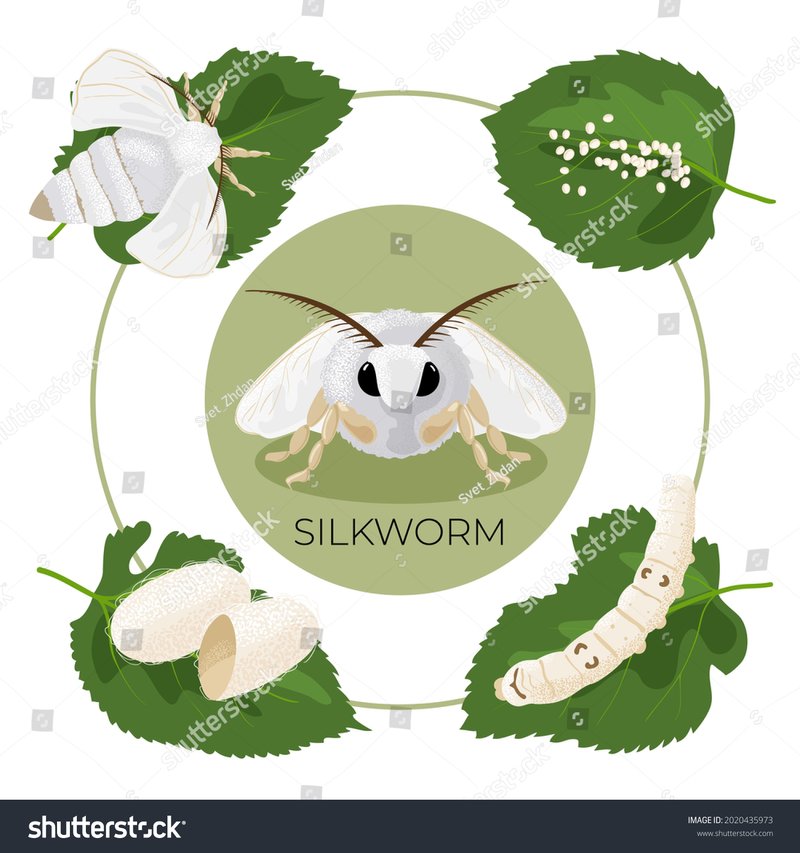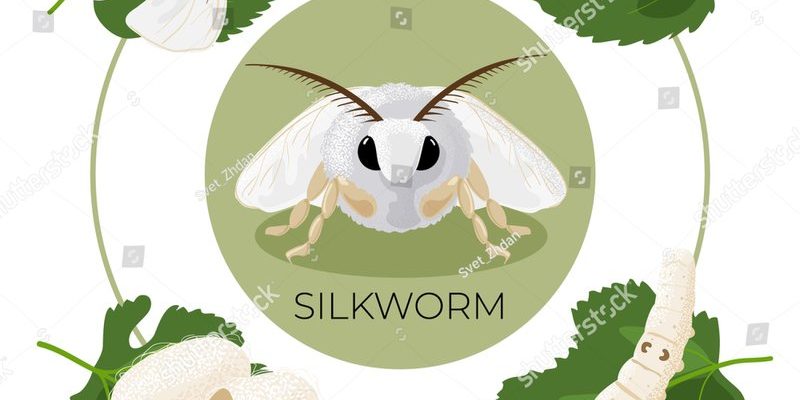
Now, you might be wondering why these humble insects are so important. Well, silkworms are the primary source of silk, a fabric that has held royal status in fashion for centuries. Understanding their development stages not only intrigues us but also sheds light on the silk production process, which has been cherished across cultures around the world.
Let’s dive into the different stages of silkworm development and explore these changes visually, so you can see how this incredible process unfolds.
The Egg Stage
The lifecycle of a silkworm begins with the **egg stage**. The female moth lays between 300 to 500 eggs, which are tiny and usually yellowish in color. If you looked closely, you’d find that each little egg is about the size of a pinhead! This stage only lasts about 10 days.
When you think about it, the egg stage is like the seed of a plant. It might not seem like much at first, but inside each egg is a developing silkworm just waiting for the right conditions to hatch. After about 10 days, when the temperature and humidity are just right, the eggs hatch into tiny larvae, known as caterpillars.
Visualizing the Egg Stage
In a visual chart, you’d see a cluster of tiny yellow eggs. Each egg would be labeled with the average incubation time of around 10 days. There could also be a visual depiction of a moth laying the eggs, capturing the start of this fascinating journey.
The Larval Stage
After hatching, *Bombyx mori*—the scientific name for the silkworm—enters the **larval stage**, which is arguably the most significant part of its life cycle. This stage lasts about 4 to 6 weeks, during which time the caterpillars feed voraciously on mulberry leaves.
Here’s the thing: During this phase, they grow rapidly, shedding their skin up to four times in a process known as molting. Each time they molt, they get larger and look quite different. Think of it like a kid going through a growth spurt, suddenly needing new clothes because their old ones no longer fit!
Visualizing the Larval Stage
In your visual chart, you could show a sequence of images depicting the growth stages of the silkworm—from a tiny caterpillar to a larger one after each molt. You might even include arrows to indicate how many times they molt and the duration of each phase.
The Pupal Stage
Next up is the **pupal stage**. After the larval phase, the silkworm takes a transformative leap into a cocoon. This is when they spin their silk, using a special gland to produce threads that can be over a mile long!
Once they’re securely wrapped in their silk cocoon, they enter a resting phase. This might remind you of a teenager taking some time off from school. They’re not quite active, but there’s a lot of growth happening behind the scenes. Within about 2 to 3 weeks, the caterpillar is going through changes that will eventually lead to the emergence of a moth.
Visualizing the Pupal Stage
On your visual chart, you would illustrate the cocoon, showing how the silkworm wraps itself tightly. Include a timeline for their pupation period, emphasizing that it lasts between 2 to 3 weeks.
The Moth Stage
Finally, we reach the **moth stage**, bringing our silkworm development saga to a close. After all that hard work inside the cocoon, the transformed silkworm emerges as a beautiful moth. It opens its wings and prepares to fly, though it won’t be long before its primary goal is reproduction.
Interestingly, silk moths can’t feed at this stage; they live off the energy they stored during their larval phase. Within a week of emerging, the female will be ready to lay eggs, and the cycle begins again. It’s a full-circle moment that reflects nature’s stunning efficiency.
Visualizing the Moth Stage
In the final part of your visual chart, showcase the adult moth with its full wingspan. You might highlight the contrasting colors and patterns of the wings, depicting the beauty of the final stage. Additionally, include a timeline showing the lifespan of the adult moth, which is around 5 to 7 days.
Importance of Each Stage
Understanding the stages of silkworm development is crucial—not just for enthusiasts but also for those involved in silk production. Each phase plays an essential role in creating silk. For instance, if there’s a disruption during the larval stage, it can affect the amount of silk produced.
Moreover, this knowledge helps farmers optimize conditions for each stage, ensuring healthier silkworms and better-quality silk. Just like in any business, knowing your product—right from the very start—is key to success.
Connecting the Stages to the Bigger Picture
So why does this all matter? Beyond just the silk trade, studying the silkworm’s lifecycle can teach us about metamorphosis in other species and the intricate balance of ecosystems. It’s a reminder that every creature, no matter how small, plays a role in the larger scheme of nature.
Let’s not forget the beauty of curiosity! Each stage of silkworm development opens doors to greater understanding in biology, agriculture, and even fashion.
In conclusion, the journey of silkworm development is a mesmerizing blend of nature’s artistry and biological wonder. By visualizing each stage—from egg to larva to pupa and finally to moth—we gain a deeper appreciation for these remarkable insects and the silk they produce. Whether you’re considering sericulture or just looking to learn something new, the lifecycle of the silkworm is a topic that continues to inspire.

